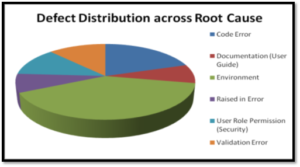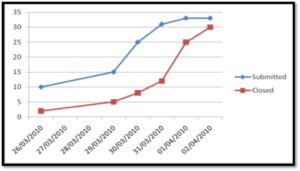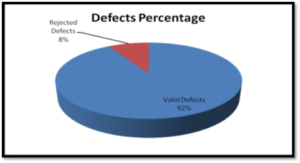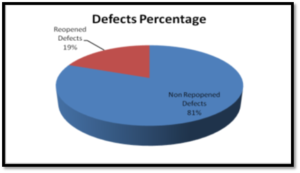Today we will look at some of the Defect metrics which can help in effectively managing the project and identifying the pain areas. Defect Metrics drive information from defects raised with a view to help in decision making. Few defect metrics for effective project management are:
- Defect Density
- Defect Cause Distribution
- Defect Detection against Closure
- Percentage of Defects Rejected
- Percentage of Defects Reopened
- Defect Density:
Defect Density is the number of confirmed defects detected in software/component during a defined period of development/operation divided by the size of the software/component.
Defect Density Formula
Defect Density = Number of Defects (at given time)/Software Size (Line of codes)
Use of Defect density:
- For comparing the relative number of defects in various software components/sub system so that high-risk components can be identified and resources focused towards them
- For comparing software so that ,quality of each software can be quantified and resources focused towards those with low quality.
2. Defect Cause Distribution
- This metrics provide information about the defect root cause i.e. the reason by which defect exists in the software.
- Finding the root cause of the defects help in identifying more defects and sometimes help in even preventing the defects
3. Defect Detection against Closure:
- This metrics provides information about detection of defects against their closure.
- This comparison provides us vital information about software quality at any given point, prediction about remaining defects and time to fix remaining defects
4. Percentage of Defects Rejected:
- This metrics indicates the level of business understating among the testers. If the percentage of defect rejection is large then we can come on conclusion that tester doesn’t have sufficient business knowledge.
5. Percentage of Defects Reopened:
- This metrics indicates the number of improper defect resolutions.
- There will be more unplanned efforts require re-fixing and testing these defects.
- It is an indicator on development process, it means how mature organization development processes are.




